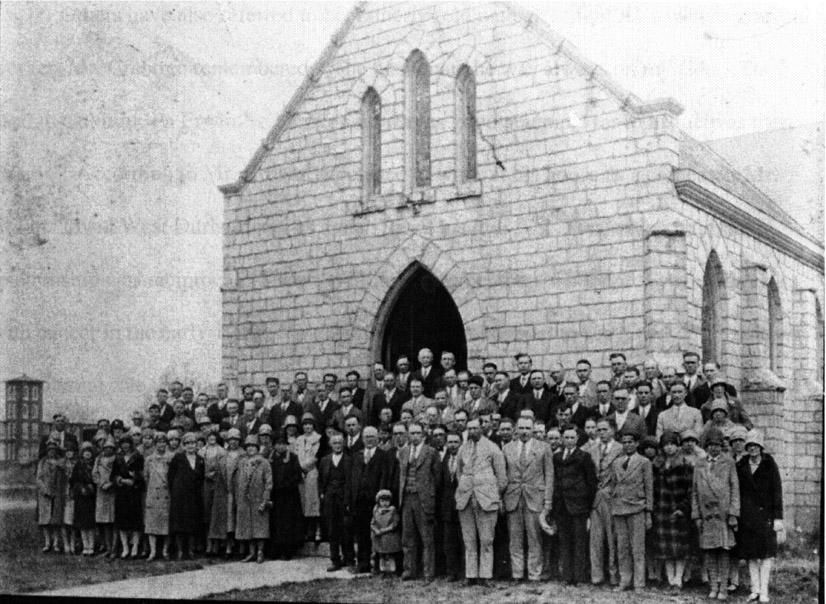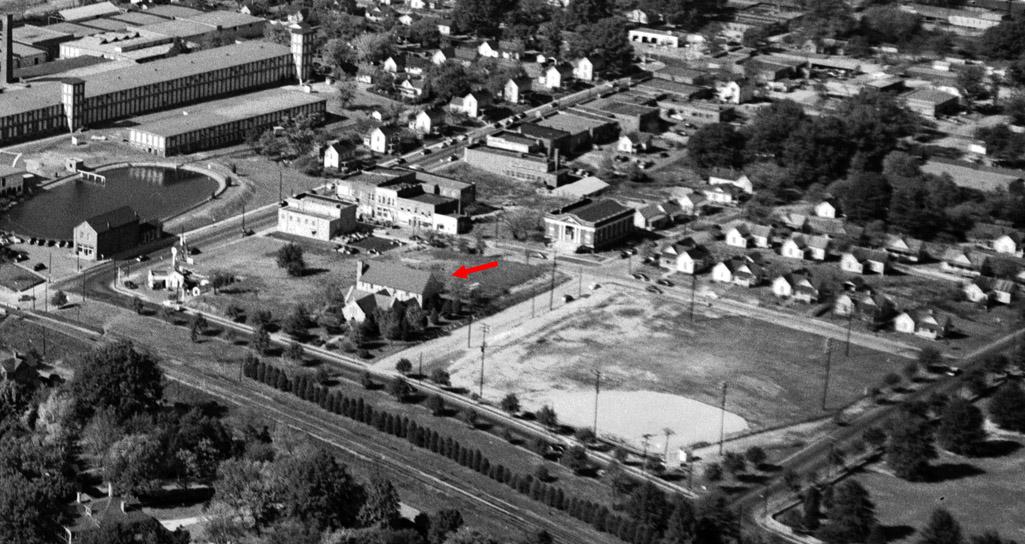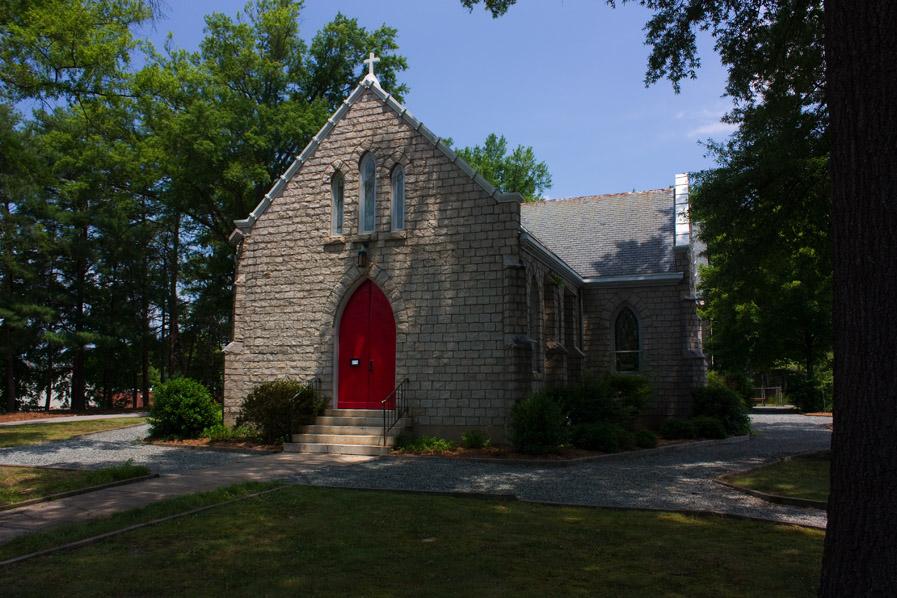Support OpenDurham.org
Preserve Durham's History with a Donation to Open Durham Today!
OpenDurham.org is dedicated to preserving and sharing the rich history of our community. Run by our parent nonprofit, Preservation Durham, the site requires routine maintenance and upgrades. We do not ask for support often (and you can check the box to "hide this message" in the future), but today, we're asking you to chip in with a donation toward annual maintenance of the site. Your support allows us to maintain this valuable resource, expand our archives, and keep the history of Durham accessible to everyone.
Every contribution, big or small, makes a difference and makes you a member of Preservation Durham. Help us keep Durham's history alive for future generations.




Comments
Submitted by JPL (not verified) on Wed, 7/29/2009 - 12:41pm
This isn't super-relevant to this post, but the text about the church's history made me wonder which side of the schism it fell on. I'm not an Episcopalian, but from a little internet research it seems that it remains within the mainstream of the ECUSA (i.e. the part of the Anglican communion that blesses same-sex unions). It further seems that the former vicar didn't agree with that position, although I can't find any information about who that was.
Submitted by Anonymous (not verified) on Wed, 7/29/2009 - 6:06pm
One interesting fact about St. Joseph's, to which I don't belong, is that it was the first pastoral appointment, in the mid-1950s, for John Shelby Spong, the arch-liberal former Episcopal bishop of Newark and popular expositor of liberal Christianity. He was the rector when the church became a self-sustaining parish. The seventh chapter of his 2001 autobiography _Here I Stand_ describes his time there in some detail.
Submitted by Michael Bacon (not verified) on Wed, 7/29/2009 - 7:24pm
The former vicar was outspoken against the ordination of Bishop Robinson, and strongly against the blessing of same sex couples. (It was because of this that Old West Durham Neighborhood Association stopped holding its meetings there.) The vicar finally stormed out of the ECUSA and left to form a new church, possibly associated with the new Anglican splinter groups, and the remaining congregation remains tied to the ECUSA.
On another note, St. Josephs was the original home of the Montessori Children's House school, where I went to preschool for a year. I SWEAR that playground used to be HUGE.
Submitted by Toby (not verified) on Thu, 7/30/2009 - 2:04am
Speaking of the church playground out back, can anyone speak to the nearly-nightly presence of folks out behind the church, hangin' out and burning fires in a 55-gallon drum? I once asked one of Durham's finest about this, and he said those folks are there with the blessing of the church.
Kinda reminds me of a tiny holdover from the old
Pinhook days...
Submitted by JR (not verified) on Fri, 7/31/2009 - 12:25am
Just a few comments:
1.) Church buildings rarely take positions in debates. Episcopalian polity, and congregational views thereon, remains a much more complex issue than may be summed up by the views of past clergy and the continuity of a the present congregation.
2.) Vicars are appointed to missions. Spong was the first rector of St. Joseph's, a rector being the pastor of a financially self-sufficient congregation, i.e., a parish. The priest alluded to above who left after the Gene Robinson controversy was the last rector of St. Joseph's, the current pastor being Vicar Rhonda Lee (the congregation is again a mission).
3.) The fire-barrel does have the blessing of the church (barring irresponsible use), an extension of the hospitality offered to Durham's local homeless. The desired overtones one might guess would be those of St. Lawrence and his commentary concerning the riches of the church.
Submitted by Vicar of St. J… (not verified) on Fri, 7/31/2009 - 1:30pm
Hello everyone - If you'd like to learn more about St. Joseph's current ministries, please check out our page, http://streetandaltar.blogspot.com.
Peace be with you - Rhonda Lee
Submitted by Gary (not verified) on Sat, 8/1/2009 - 12:19am
"Church buildings rarely take positions in debates."
Yes - which is actually the point. The intent in quoting from the church website regarding the change in the congregation was to describe, as I always do, how the use of a structure changes over time. That building is a piece of continuity, whether between a parish and a mission, between a synagogue and a mosque, or a church that becomes a tae kwon do studio.
GK
GK
Submitted by Jeff (not verified) on Tue, 12/15/2009 - 7:05pm
I stumbled on "Endangered Durham" blog and found St. Joseph's Church. I have fond memories of this church as I spent lot's of my summers at my Grandfather's and Aunt's house in Durham in the 60's and 70's.
Some history of our family and the church:
- All of my Mother's family went to the church when they grew up in West Durham.
- My Parents were married there in 1957, (all of my mother's brothers/sisters were also married there),
- My sisters and I were baptized there in the early 60's,
- My oldest sister was married there in 1982
- My Mother's wake was there in 1988
- I was married there in 1990,
and I'm sad to say I haven't been back since I was married. I guess I need to bring my family and start a new tradition.
The "little church with the red doors" will always be close to my heart!
My Mother grew up in a small house on Hillsborough Rd. where the present day Food Lion is located.
-Jeff
Submitted by joyce Avery (not verified) on Mon, 6/16/2014 - 2:55pm
In reply to I stumbled on "Endangered by Jeff (not verified)
You must a Barber. I knew and loved them all. The outside of the church looks the same but the inside has been cjamged and is no longer historicaly correct.
Submitted by Wendy Hillis (not verified) on Tue, 2/24/2015 - 2:10am
Parish house behind main church (1928)
Architects: Northup & O,Brien with George Watts Carr
Drawings available at NCSU Special collections:
Add new comment
Log in or register to post comments.